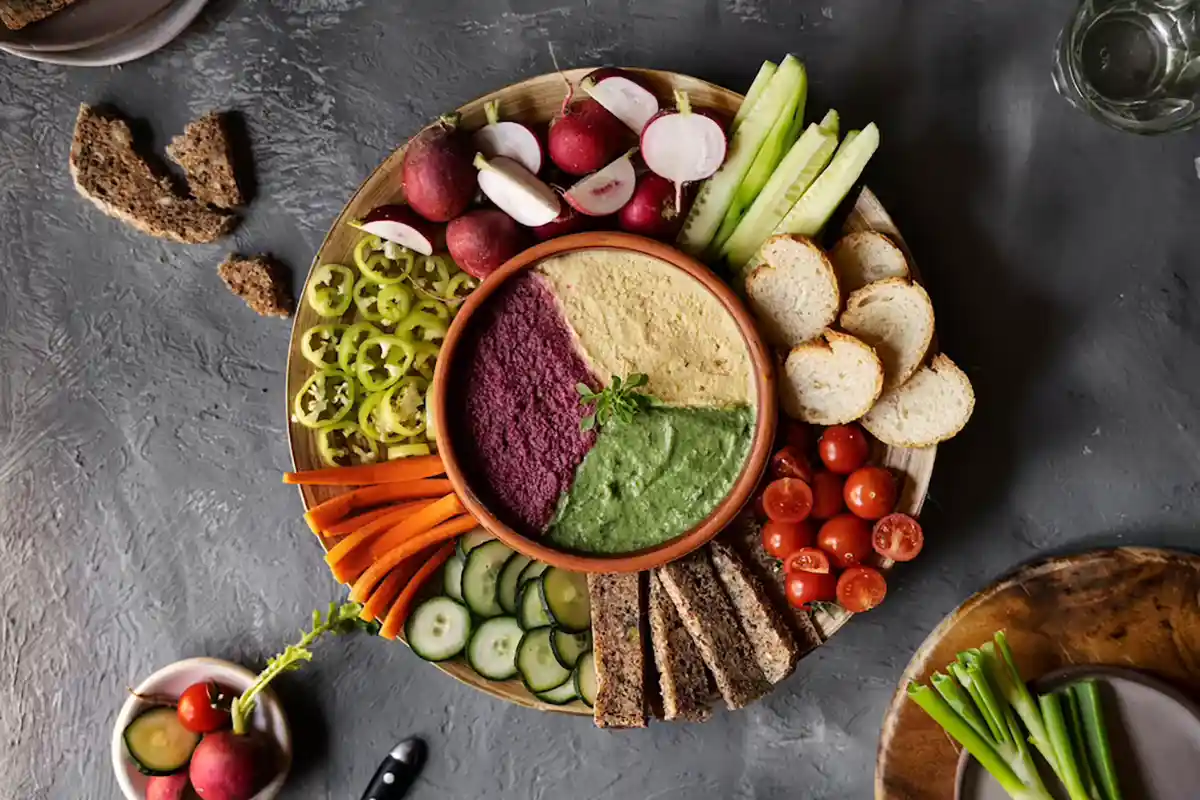Eating a vegan diet doesn’t mean you have to compromise on flavor. With the right combination of plant-based foods, you can create delicious, satisfying meals that leave you feeling full and nourished. This article will explore the art of vegan pairing and offer tips and tricks to help you pair your favorite plant-based foods to create flavorful, balanced meals.
1. Introduction
Veganism is becoming increasingly popular, with more people adopting a plant-based diet for health, environmental, and ethical reasons. However, many people still struggle to create tasty, satisfying meals without the use of animal products. Vegan pairing is the art of combining different plant-based foods to create balanced, flavorful meals that are not only nutritious but also delicious.
In this article, we will explore the basics of vegan pairing and offer tips and tricks to help you create mouth-watering vegan meals that you’ll love.
2. What is Vegan Pairing?
Vegan pairing is the process of combining different plant-based foods to create a balanced, satisfying meal. The goal of vegan pairing is to create a meal that not only tastes delicious but also provides the nutrients your body needs to thrive.
3. The Basics of Vegan Pairing
There are several factors to consider when pairing vegan foods. These include:
Flavor Profiles
One of the most important factors in vegan pairing is flavor profiles. It’s essential to consider the flavors of different foods and how they complement or contrast with each other. For example, sweet potatoes pair well with spicy foods, while lemon juice can enhance the flavor of greens.
Textures
Texture is another crucial element in vegan pairing. Combining foods with different textures can make a meal more interesting and satisfying. For example, pairing crispy vegetables with creamy avocado can create a delicious contrast.
Colors
Colors play a significant role in vegan pairing, not only in terms of aesthetics but also in terms of nutrition. Eating a variety of colorful fruits and vegetables ensures that you’re getting a range of nutrients and antioxidants.
Nutritional Balance
Finally, it’s crucial to consider nutritional balance when pairing vegan foods. A balanced vegan meal should include a variety of macronutrients (carbohydrates, protein, and fat) and micronutrients (vitamins and minerals) to provide your body with the energy and nutrients it needs to function correctly.
4. Popular Vegan Pairings
There are many delicious and nutritious vegan pairings to choose from. Here are a few popular options:
Legumes and Grains
Legumes (such as lentils, chickpeas, and black beans) are an excellent source of plant-based protein, while grains (such as quinoa, rice, and bulgur) are a great source of carbohydrates. Combining legumes and grains creates a complete protein and provides a range of essential nutrients.
Tofu and Vegetables
Tofu is a versatile, high-protein ingredient that pairs well with a variety of vegetables. For example, stir-frying tofu with broccoli, bell peppers, and onions creates a delicious food.
Nuts and Seeds
Nuts and seeds are an excellent source of healthy fats, protein, and other essential nutrients. They can be used to add crunch and texture to salads or blended into nut butter for a creamy, rich flavor.
Fruits and Greens
Combining fruits and greens is a great way to create a refreshing, nutrient-packed meal. For example, a spinach and berry salad provides a range of antioxidants, vitamins, and minerals.
5. Tips for Successful Vegan Pairing
Here are a few tips to help you create delicious, satisfying vegan meals:
Experiment with Different Combinations
The key to successful vegan pairing is experimentation. Don’t be afraid to try new combinations of foods and flavors to find what works best for you.
Think Outside the Box
There are no hard and fast rules when it comes to vegan pairing. Don’t be afraid to think outside the box and try unusual flavor combinations.
Use Fresh, Seasonal Ingredients
Fresh, seasonal ingredients are always the best choice when it comes to vegan pairing. Not only do they taste better, but they’re also more nutrient-dense.
Keep it Simple
Sometimes the simplest vegan meals are the most satisfying. Don’t feel like you have to use a lot of ingredients or complicated techniques to create a delicious meal.
6. Conclusion
Vegan pairing is the art of combining different plant-based foods to create a delicious, balanced meal. By considering flavor profiles, textures, colors, and nutritional balance, you can create meals that are not only satisfying but also packed with essential nutrients. Remember to experiment with different combinations, think outside the box, and use fresh, seasonal ingredients to create the most delicious vegan meals.
7. FAQs
Is vegan pairing only for vegans?
- No, anyone can benefit from vegan pairing. Combining plant-based foods is a great way to create healthy, satisfying meals, whether you’re a vegan or not.
Can I still get enough protein on a vegan diet?
- Yes, there are plenty of plant-based protein sources, including legumes, tofu, tempeh, and nuts and seeds. By combining different protein sources, you can create a complete protein and meet your daily protein requirements.
Do I need to take supplements on a vegan diet?
- It’s possible to get all the nutrients you need from a vegan diet, but some people choose to take supplements to ensure they’re getting enough of certain nutrients, such as vitamin B12.
Are there any downsides to a vegan diet?
- Like any diet, a vegan diet has its potential downsides if not properly planned. It’s important to ensure that you’re getting all the nutrients your body needs and that you’re not relying too heavily on processed foods.
Can vegan meals be satisfying and delicious?
- Absolutely! With the right combination of plant-based foods and seasonings, vegan meals can be just as delicious and satisfying as meat-based meals.



